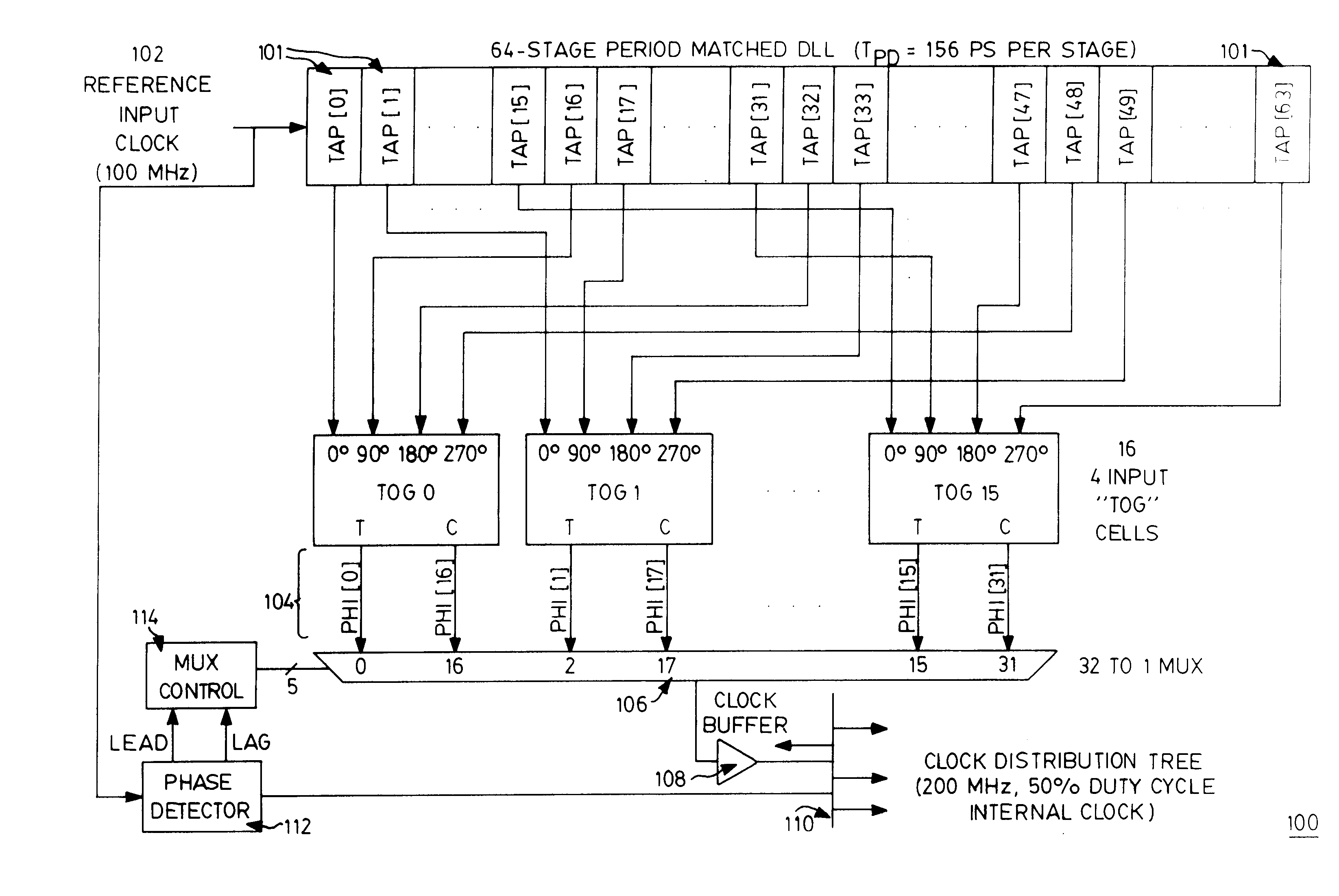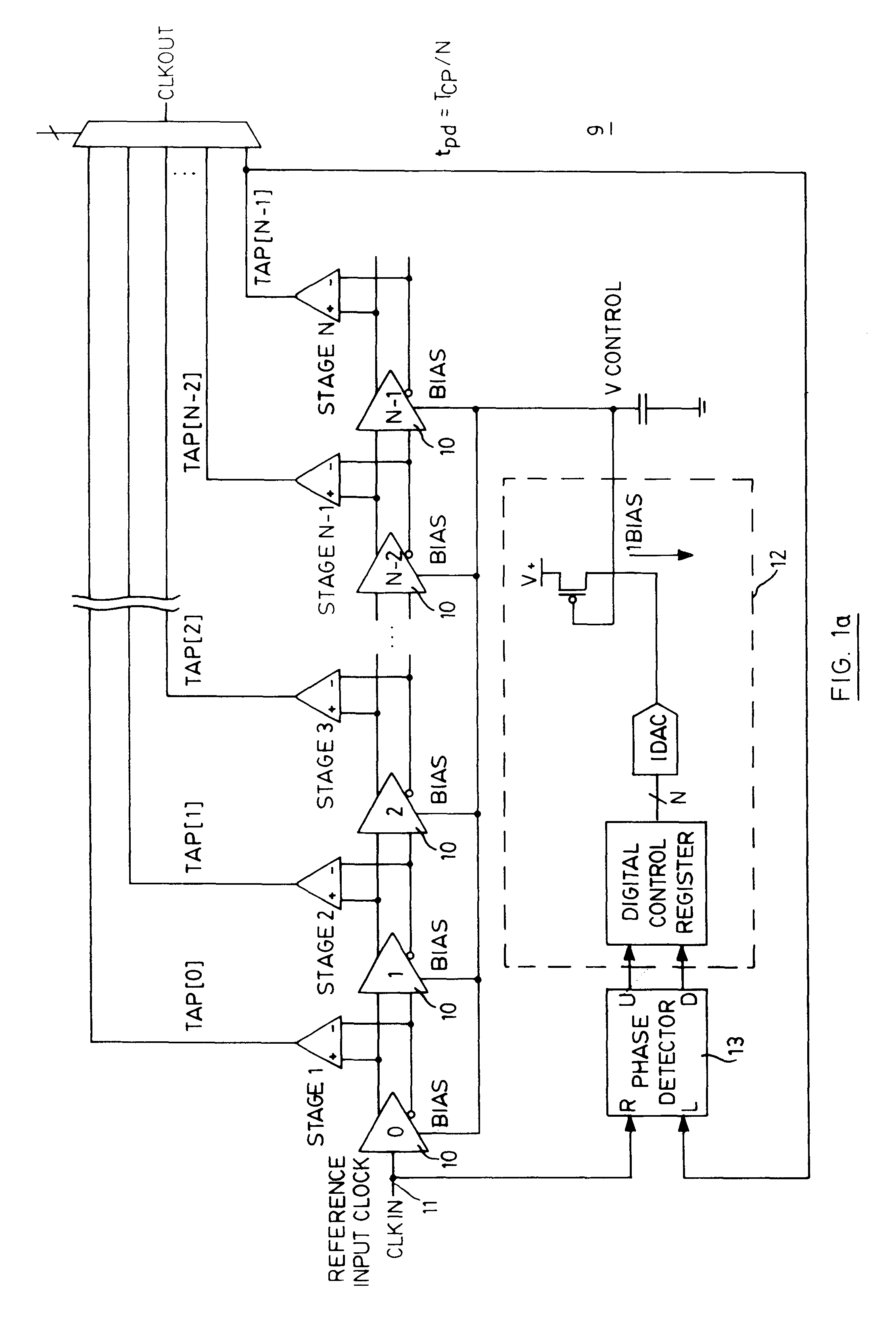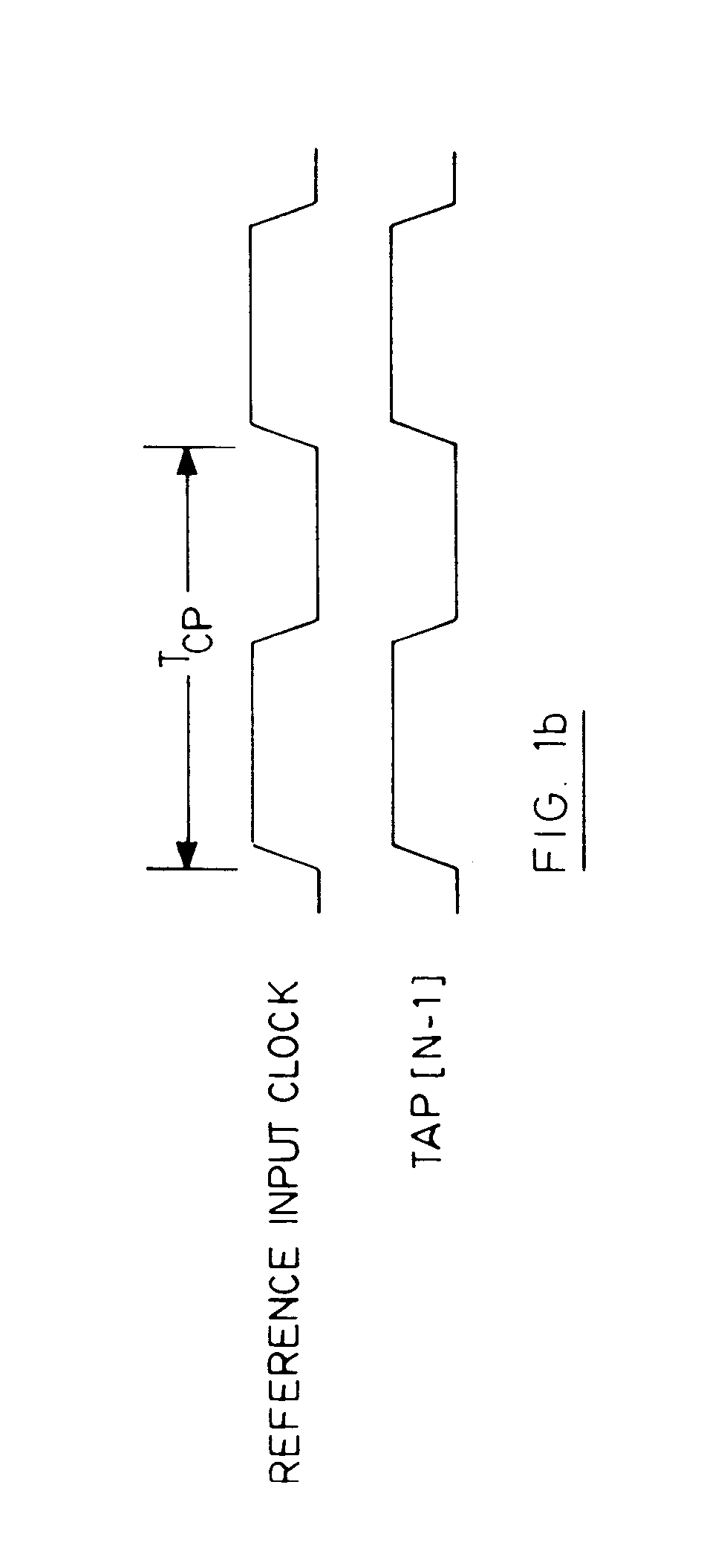Frequency-doubling delay locked loop
a delay lock and frequency technology, applied in the field of frequency double delay lock loop, can solve the problems of analog plls suffering from a number of general drawbacks, general unsuitability of pll-based clock generation systems, and inability to meet the requirements of plls
- Summary
- Abstract
- Description
- Claims
- Application Information
AI Technical Summary
Benefits of technology
Problems solved by technology
Method used
Image
Examples
first embodiment
FIG. 4(a) illustrates an alternate embodiment of the frequency doubling DLL invention employing duty cycle colon. Similarly to the first embodiment discussed with reference to FIG. 3(a), an N-stage period-matched DLL (with N being divisible by 4) is used to provide (N-1) outputs TAP[N-1], where each delay stage 30 provides one TAP[i] output. In this alternate embodiment however, the N / 4-1 TOG cells have 4 inputs per cell instead of just 2. Specifically, the outputs of all N delay stages are connected to N / 4 TOG cells. The 0 degree, 90 degree 180 degree, and 270 degree inputs to each TOG cell are connected to the output of delay elements consecutively separated by N / 4 stages. For example, TOG cell 0 receives TAP[0] at its 0 degree input, TAP [N / 4 ] at its 90 degree input, TAP[2N / 4] at its 180 degree input and TAP[3N / 4] at its 270 degree input. Together, all the true (T) and complimentary (C) outputs of the N / 4 TOG cells 31, 32, . . . 33 PHI[0]) . . . PHI[N / 2-1] present N / 2 distinct p...
second embodiment
For applications where the phase relationship between the reference input clock and the frequency doubled internal clock is important, the N / 2 output clock phases from the frequency doubling DLL can be fed to the inputs of a N / 2 to 1 multiplexer. By adding a phase detector and MUX control logic, it is possible to chose the most appropriate clock phase from the N / 2 clock phase outputs. A full clock generating scheme comprising the frequency doubling DLL with duty cycle correction invention for use in a memory interface ASIC is represented generally in FIG. 6 by the numeral 100 or delay elements 101. In this implementation, N=64 stages and the input reference clock 102 is nominally 100 MHz (Tcp=10.0 ns). It can be seen that the resolution depends on the number of delay elements 101. The DLL generates 32 phases 104 of a 50% duty cycle 200 MHz clock with each phase output spaced 720 / 64 or 11.25 degrees apart. A 32-input multiplexer 106 selects 1-of-32 phases to drive the clock buffer 10...
PUM
 Login to View More
Login to View More Abstract
Description
Claims
Application Information
 Login to View More
Login to View More - R&D
- Intellectual Property
- Life Sciences
- Materials
- Tech Scout
- Unparalleled Data Quality
- Higher Quality Content
- 60% Fewer Hallucinations
Browse by: Latest US Patents, China's latest patents, Technical Efficacy Thesaurus, Application Domain, Technology Topic, Popular Technical Reports.
© 2025 PatSnap. All rights reserved.Legal|Privacy policy|Modern Slavery Act Transparency Statement|Sitemap|About US| Contact US: help@patsnap.com



